In-depth interpretation of the EVM ecological empire
Source: GravityX Capital
Compiled by: Captain Hiro, The Way of DeFi
The Ethereum Virtual Machine (EVM) is the de facto standard among blockchain developers, backed by a massive community support. This has led other Ethereum Virtual Machine-compatible blockchains to explore this system, while non-EVM-compatible blockchains are building EVM-compatible layers on top.
Friends, let's dive deeper into the topic of Ethereum Virtual Machine compatibility!

After a limited success in its launch, the so-called "Ethereum killers" are building on-chain solutions to further support the Ethereum Virtual Machine. For example, Moonbeam on Polkadot, Aurora on NEAR Protocol, Evmos on Cosmos, and Neon on Solana.
What is EVM?
The Ethereum Virtual Machine is responsible for defining the rules for computing new valid states from block to block. The EVM is a powerful sandboxed virtual stack within each Ethereum node, responsible for executing contract bytecode.

Currently, Ethereum developers are leading the development activities in Web3, with over 4,000 active developers each month. Ethereum continues to have the largest ecosystem of tools, applications, and protocols, 2.8 times larger than the second-largest ecosystem. One in five new Web3 developers is building on Ethereum.

Solidity and the Ethereum Virtual Machine are the de facto standards for blockchain.
Ethereum was the first blockchain to allow on-chain smart contract execution, for which they released Solidity, a coding language compatible with the Ethereum Virtual Machine. Almost all successful decentralized applications (dApps) use Solidity and the EVM to execute smart contracts.
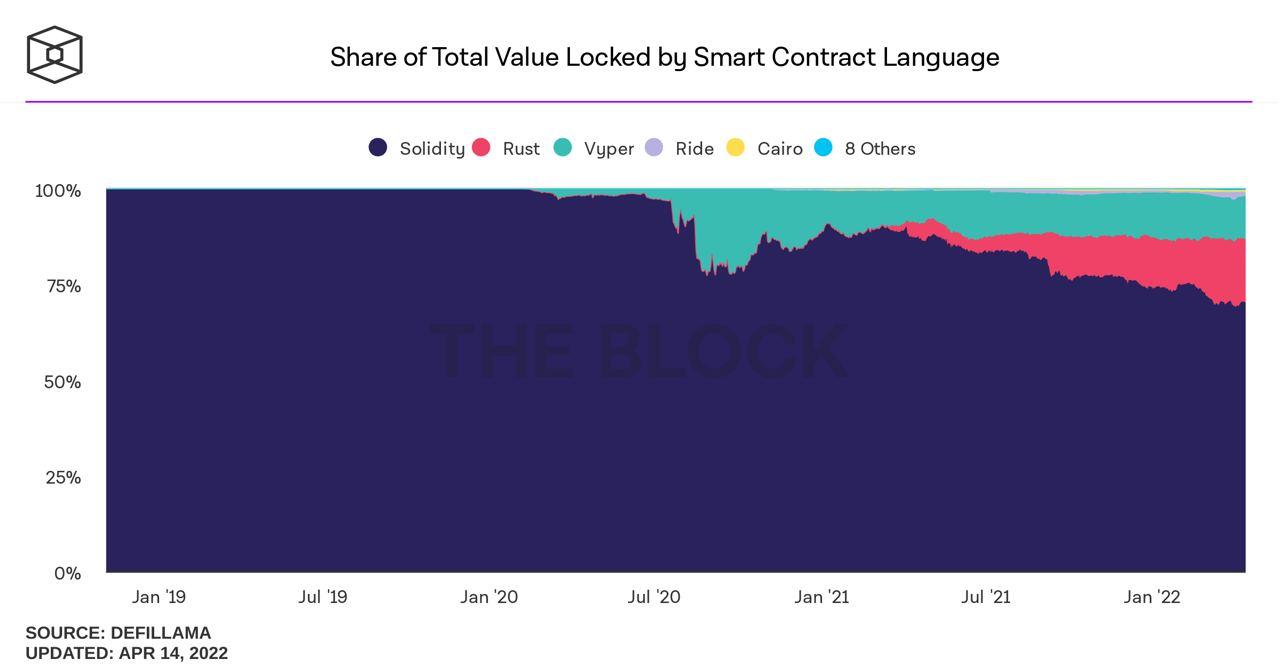
As Ethereum began to gain more usage and attention, many different tools emerged on the network to alleviate and accelerate the execution and deployment of smart contracts on Ethereum (and the EVM). You may know protocols like Truffle, Ganache, Infura, OpenZeppelin, and Hardhat.
In addition, Ethereum was the first network to deploy smart contracts, and it still remains the gold standard among competing chains. However, due to its scale and massive user base, Ethereum's scalability has now become a significant issue.
EVM-Compatible Chains
Other permissionless blockchains have quickly responded to the current issues on Ethereum by offering lower gas fees and faster transactions. However, the developers of these blockchains have not developed new ways to implement smart contracts; instead, they simply copied parts of the Ethereum network.
What do these competing chains offer Ethereum?
For consumers, EVM-compatible chains provide cheaper gas prices, faster transactions, and the same address format as Ethereum, creating a user-friendly environment. This accelerates traffic and ecosystem expansion, as Ethereum users can easily transition to other chains.
For developers, EVM-compatible chains establish a code execution environment equivalent to the Ethereum Virtual Machine. This means Ethereum developers can quickly and easily deploy protocols to other competing chains without having to create code from scratch.
Currently, a massive ecosystem has developed around EVM-compatible chains, such as Avalanche, Binance Smart Chain, Fantom, and layer two solutions like Arbitrum and Optimism. The following image shows a comparison of smart contract platforms based on the Ethereum Virtual Machine:
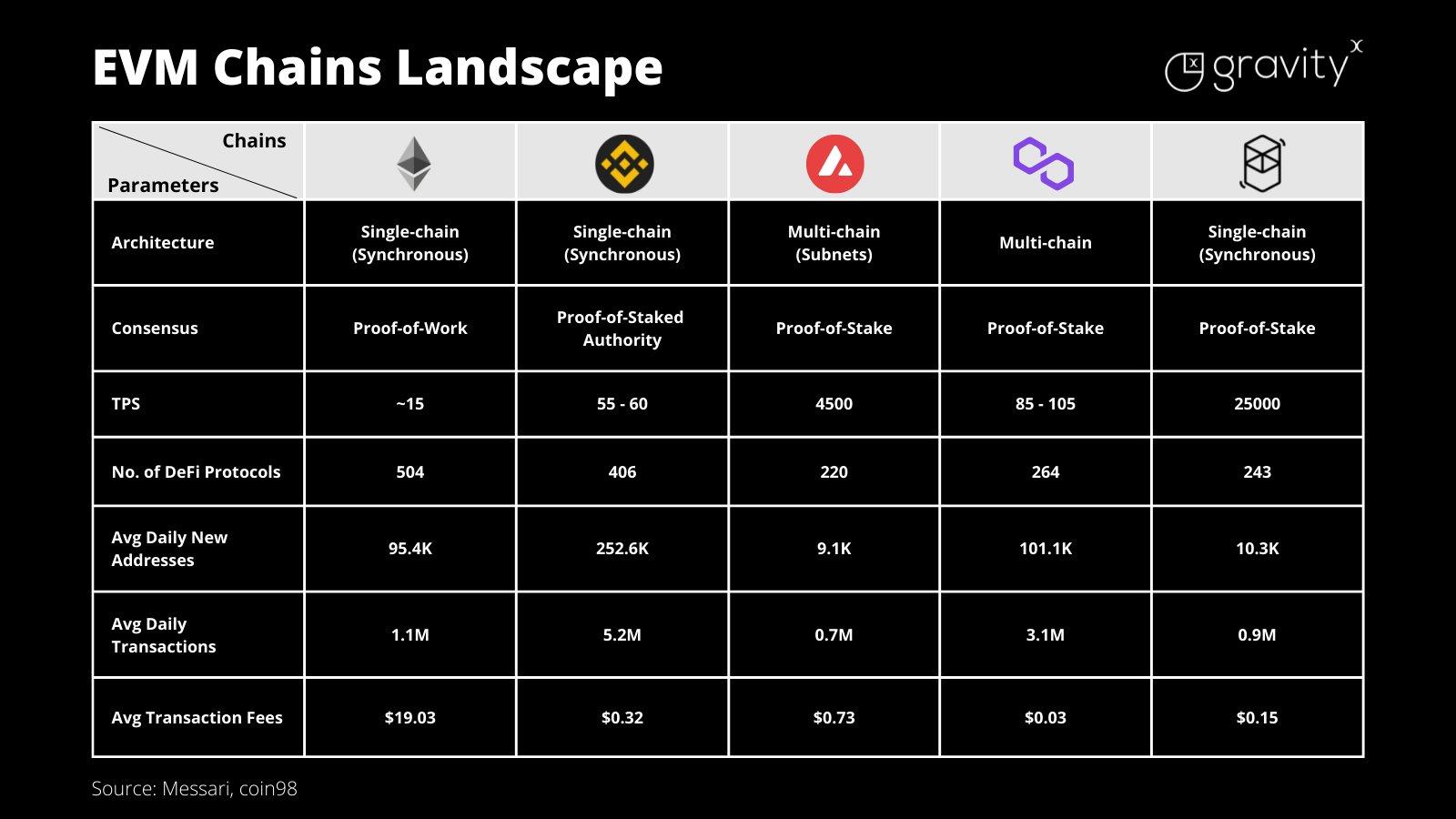
Non-EVM-Compatible Chains
Various blockchains have intervened to solve Ethereum's scalability issues, not supporting the Ethereum Virtual Machine and using different virtual machine standards, such as CosmWasm. Popular examples of these blockchains include Solana, Cosmos, Near Protocol, and Polkadot.
Non-EVM Blockchains Enabling EVM
Initially, those blockchains that were launched without EVM compatibility had superior designs, such as popular programming languages and speed. However, after including EVM compatibility, these blockchains abandoned their original goal of developing an alternative technology stack to Ethereum.
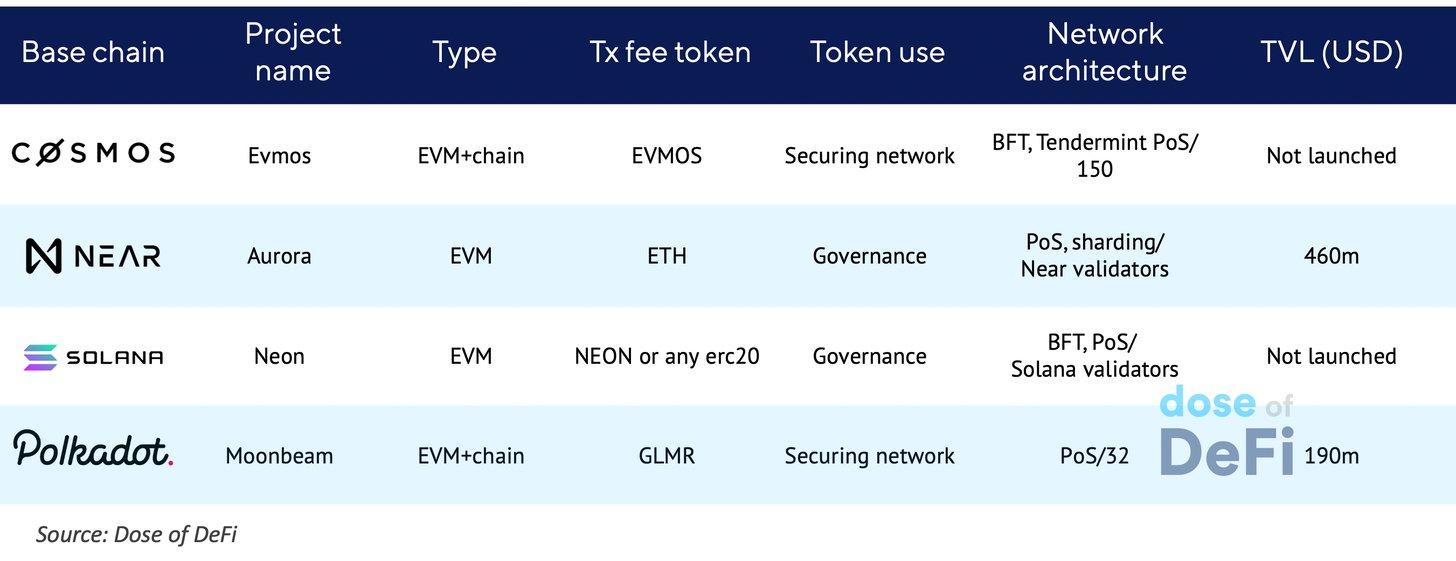
Projects Building EVM Compatibility on Non-EVM Chains
- Aurora on NEAR Protocol
- Moonbeam on Polkadot
- Evmos on Cosmos
- Neon on Solana
- Oasis Emerald Paratime on Oasis Swao
- Plans announced by Algorand
Aurora is a technology that enables Ethereum contracts to execute in a higher-performance environment, specifically on the NEAR blockchain, which is a contemporary layer one blockchain known for its speed (2-3 seconds to complete transactions), strong scalability, and environmental friendliness.
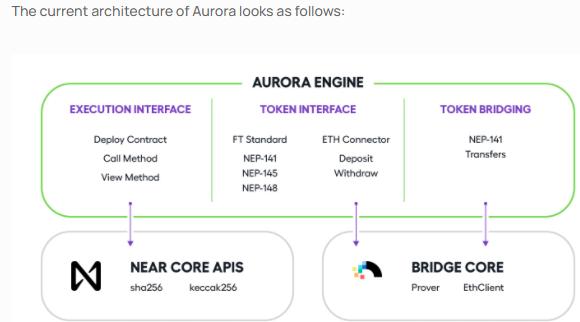
Polkadot and Cosmos are multi-chain blockchains that support Moonbeam and Evmos, respectively. They chose not to implement the Ethereum Virtual Machine alongside the main virtual machine but instead provide a dedicated subchain for it.
Moonbeam is a platform that supports EVM compatibility and deploys decentralized applications on Polkadot. As projects continue to be deployed on Moonbeam, it has become key to bringing utility and interoperability to the network.
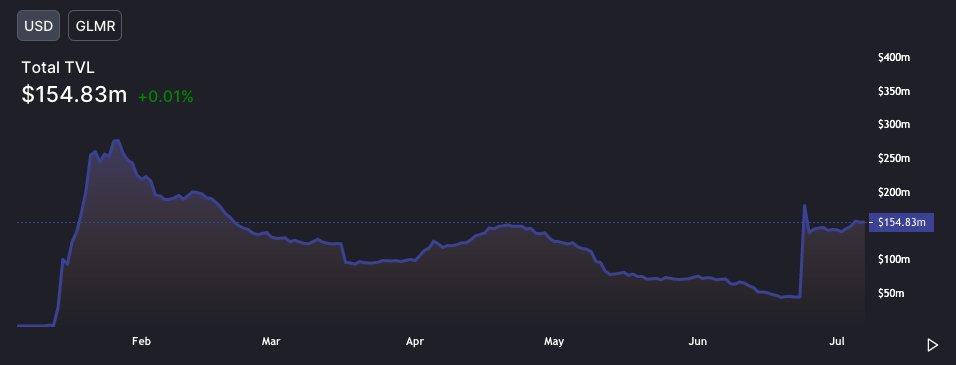
Evmos on Cosmos is an application-agnostic chain that will interoperate with the Ethereum mainnet, EVM-compatible environments, and other BFT (Byzantine Fault Tolerant) chains through IBC (Inter-Blockchain Communication), allowing users and developers to easily transfer value across chains.

Neon is a virtual machine that allows developers to leverage Solana's scalability, liquidity, and Ethereum's tools. This means decentralized application developers can benefit from lower gas fees, faster transactions, parallel transaction processing, high throughput, and access to the Solana market.

Emerald Paratime on the Oasis network aims to reduce transaction costs by increasing throughput to over 1,000 transactions per second. This EVM supports decentralized applications, including DeFi (Decentralized Finance), NFTs, metaverse, and cryptocurrency gaming projects. Additionally, it achieves cross-chain interoperability.
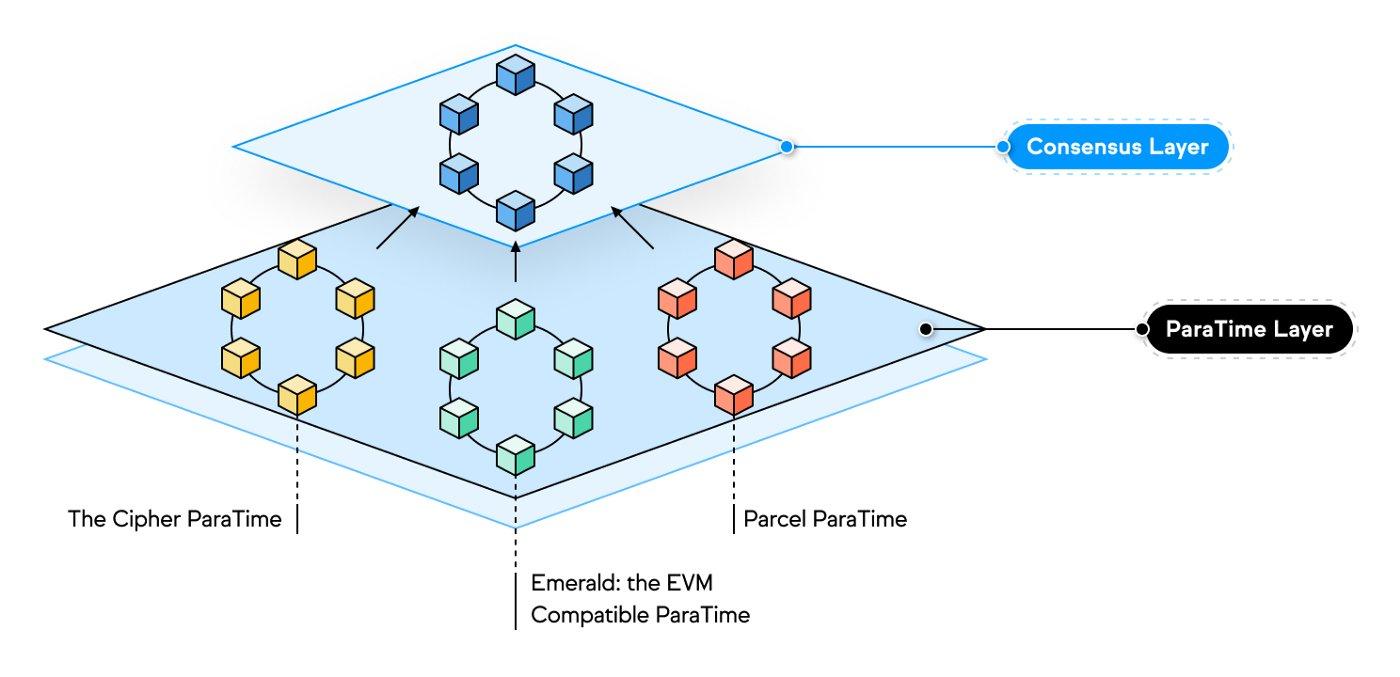
Algorand recently announced a $20 million fund to accelerate the development of its ecosystem. Officials from its foundation stated that $10 million of the grant will be allocated to developers capable of providing EVM compatibility solutions.
EVM-Compatible Rollups
zkEVM is a virtual machine that can execute smart contracts in a way compatible with zero-knowledge proof computation.
Hermez zkEVM is an optimized zkEVM-compatible technology that provides full OPCODE compatibility and Ethereum security.
Scroll ZK rollup is an EVM-compatible rollup that features a robust network, a strong outsourcing mechanism, incentivizing users (rollers) to generate zero-knowledge proofs, and is compatible with all existing Ethereum infrastructure without any modifications.
The environment of the Ethereum Virtual Machine can serve as an entry point for assets from EVM chains into these foundational chains. Users will choose bridges that are convenient and secure for them. The following graphic describes the interaction between Cosmos Hub, Evmos, and Ethereum Virtual Machine chains.
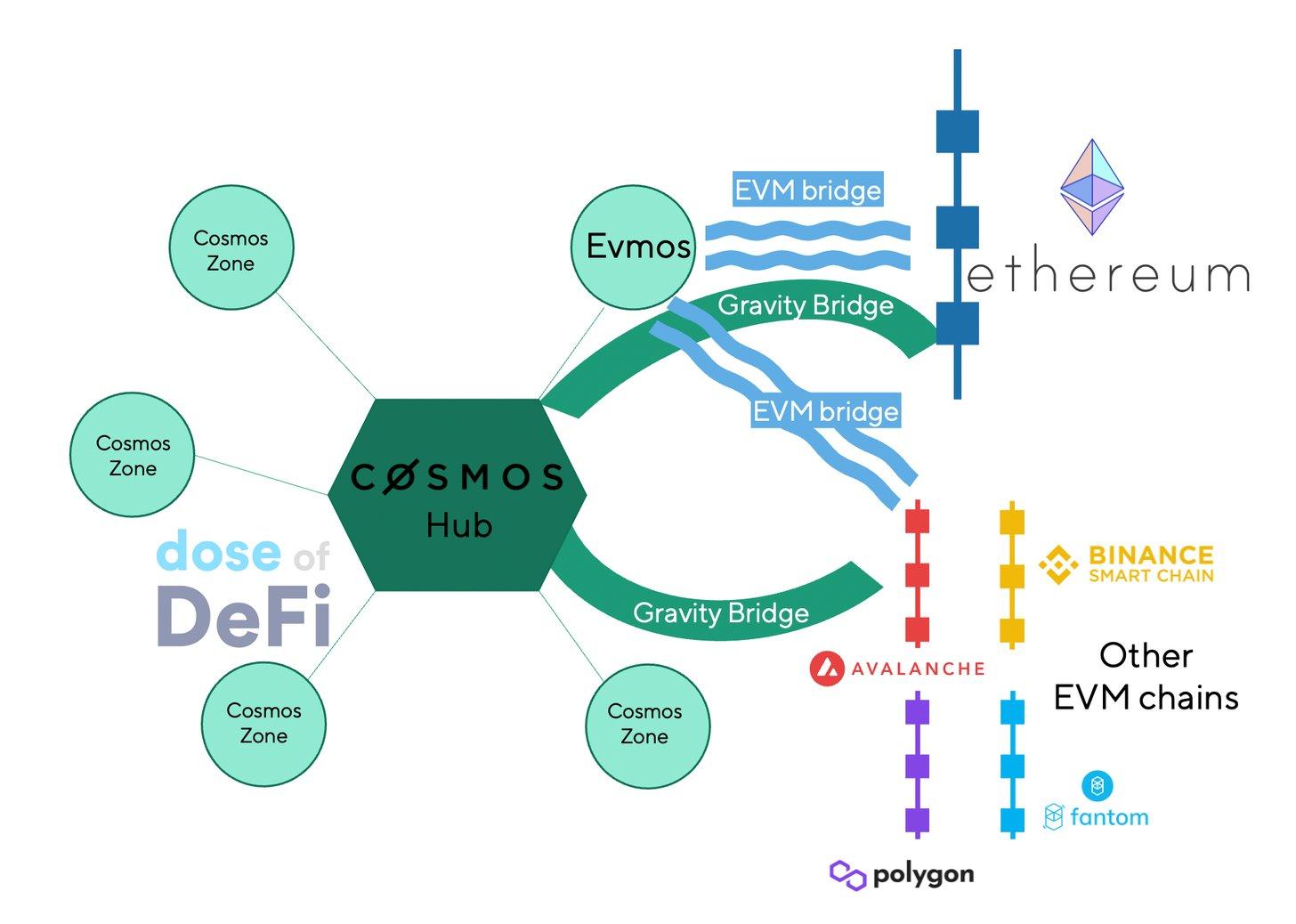
The Ethereum Virtual Machine is the de facto standard for executing smart contracts. It facilitates the transfer of liquidity from the Ethereum blockchain to these faster, cheaper, and more scalable EVM solutions. Furthermore, as the developer community around the Ethereum Virtual Machine continues to grow, it will address many of the issues faced by the Ethereum main chain.









